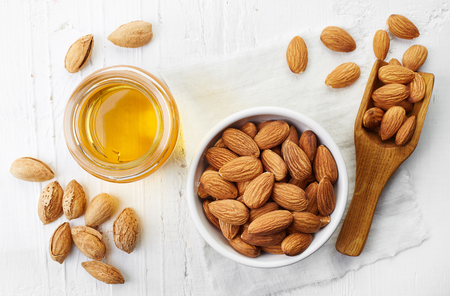Honeybees Headed to California for Almonds
January 30, 2018
Given that bees pollinate roughly 70 percent of crops around the world, per Cornell University, it would be a serious problem if the day ever came where we needed to pollinate crops without them. Throughout most of a given year, U.S. farming operations keep honeybees in high demand, and it’s this country’s beekeepers that make sure these operations have enough pollinators.
One such beekeeper, Chuck Kutik, will rent his hives out to farmers all year, and this winter is seeing his hives being sent out west for one crop in particular—almonds. In fact, most commercial beekeepers like Kutik will send most of their hives out to California specifically for almond pollination.
Regarding Kutik’s bees, he loads them onto flatbed trucks, about 112 palates’ worth, and sends the hives on a cross-country, multi-day journey. The truck drivers move all throughout the day and stop only at night to keep the warmer, daytime temperatures from tempting the bees to fly outside the hives. Once settled in the almond orchards, the bees spend the next few weeks pollinating the bright almond blooms before being taken to the east coast to pollinate another crop.
According to beekeeper and almond farmer Ryan Cosyns, pollination rental prices have almost doubled in the last 13 years, which directly correlates with the increased acreage being dedicated to almonds. Just one of Kutik’s hives rented for $200 last year. However, as demand for honeybees has swelled, so have the challenges of keeping bees healthy. The USDA estimates that U.S. beekeepers lost as much as 44 percent of their hives between the years 2015-16.
"The consensus in the scientific community now is that it's not any single factor that is driving losses of bees," says Scott McArt, who is an associate entomology professor with Cornell University. Multiple factors are involved, such as pesticides, climate change, and habitat loss. Despite this, however, overall honey populations have been rising recently.
"This is something that a lot of people don’t necessarily understand," says Emma Mullen, who is an entomology associate with Cornell University, "because if you do track the number of colonies that are in New York or the U.S., they do tend to increase. So, what they’ll do is they’ll split their colonies, and in that way, they can continue to replace the colonies that were lost and grow their operation."
When Kutik brings his bees home, he will have plenty of work to do, as it will be honey season soon. However, despite work from beekeepers like Kutik, the U.S. still cannot make enough honey to meet the country’s total demand. “We only produce, I don't know what it is, 120 million or 140 million pounds of honey in the U.S.," says Kutik. "I think the consumption is 300. The consumption is way more than we can produce." The rest of us will just have to see if beekeepers here in the states can keep up with the growing demand of U.S. consumers.


.jpg)




